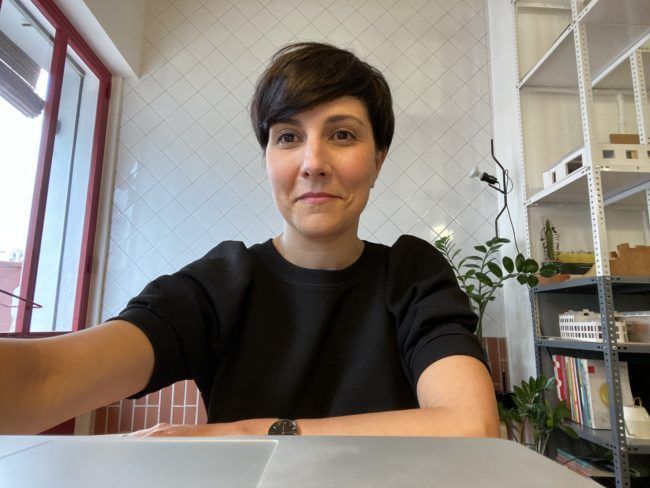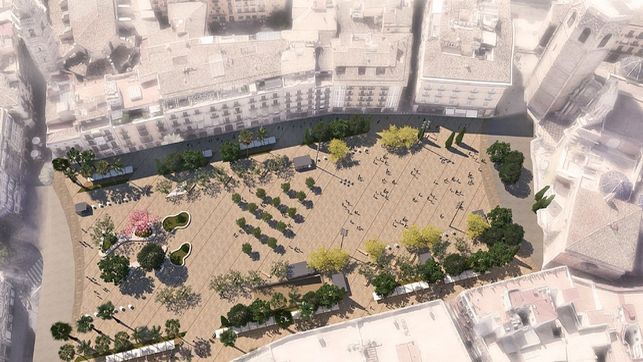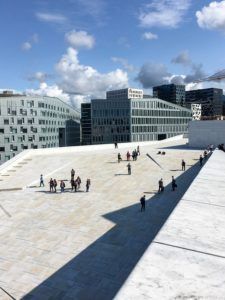The global crisis unleashed by COVID-19 has brought changes to our daily life, our lifestyle, our leisure activities, our workplace. The world needs to adapt to a new normal. Architecture, too. After all we have experienced, will residential design change in the upcoming years? What will citizens expect from the city? Will our urban spaces become greener? These are some of the questions I discussed in my last interview with Ana Ábalos, professor of our Architecture Degree and co-founder of Ábalos Llopis Architects.
The way we interact with our homes has changed dramatically in the past months. It seems like many of us were not prepared to spend that much time indoors. Do you think this will determine the way houses are going to be designed in the future?
For sure there will be an impact in the way we conceive architecture. Our house is our immediate environment. It has been, it is and it will always be related to the way we live. I hope that after this COVID-19 crisis, people will have learnt about their own habits and way of living. The current situation will be a turning point for architecture, as people will get more involved in it and will become more interested in how their homes are designed. And not only as an investment, as it has happened during the real estate bubble, but as a value: a place that can be enjoyed, and that has been designed to bring people together.

Some experts defend that the virus could be airborne. Will this represent an increase in the demand for sustainable housing or improved ventilation systems to maintain indoor air quality?
Architecture is a reflection of our society. In medieval times, epidemics brought new urban concepts: a more open city, with more green areas. In Barcelona, for example, the Eixample district was designed so the city would support more open and therefore healthier spaces. The designers even estimated the amount of fresh air citizens needed to live in optimal conditions. Something similar could happen with the current situation: maybe we need to think about new ventilation systems, new filters that could prevent the spread of the virus, or even technical systems to reduce indoor air pollutants. Evidently, these measures will need to comply with new policies and regulations that will have to be implemented.
We mustn’t forget that this situation has already changed human behaviour. Thinking about house buyers, whose priorities or preferences may have changed, do you see a difference in what they look for in their homes? Are we starting to demand new features to improve our living conditions?
I think this is an opportunity for everyone to reflect on the way we live and also what we need to have at home. I’m sure that some people have realized that maybe they need an extra room, or they have thought about dividing their big living room into different areas. It is possible that those people now need a place to work at home, a place for children to play in, or maybe they are rethinking their kitchen. It is extremely interesting to see how, before the crisis, the house was not the place where we spent most of our time, but just some hours. And now everything has changed: our house holds all of our activities and we are rediscovering those small pleasures that we had forgotten about, possibly because we were spending much of our time outdoors. I hope that people will become more aware of their real needs and what they can expect from the architecture of their homes.
Spaces for a post-pandemic normality
This pandemic is also going to create new types of jobs, some of them remotely managed. How will working from home affect architecture?
I think we have realized these last weeks, and a bit hurriedly, that we needed to rethink our working space. Before the pandemic, maybe the solution was as simple as having a table, a computer, and a plug. That was it. In my opinion, the place where we work needs to be something more and deserves some thinking. We spend a lot of our time working at home so sitting in a regular chair in a corner of our living room is not a lasting solution. It is time to create a proper working space where we can concentrate in good conditions: we will need a window, we will need a good view… Also, if we need to share this space with other members of our family, each one doing their own thing: children playing, dad attending an online meeting, mum working on her computer. All of these activities need to coexist, and thus space will need to adapt. Maybe through flexible structures that can divide a room into different areas depending on the activity: working, studying, doing some sports…
“We need to increase the number and quality of pedestrian spaces in our cities”
I think it is important to be aware of our main activities and make them coexist in the same place simultaneously, and also how the different members of the family can carry out their activities all together. For people with disabilities this can be more challenging because they have different needs in terms of space, ventilation, and mobility. For this reason I think it is highly important to think about some minimum standards. There are several types of houses, some of them with no exterior light, and you can hear people clapping at 8pm but you can’t see them because their flats have an interior view.
We have seen how the pandemic has accelerated some developments and processes. Our University, for instance, has adapted very rapidly to virtual teaching to guarantee that students continue with their education. Do you think that we can expect something similar in architecture, some very fast changes?
I hope that this acceleration process happens mainly in the city, in the domestication of the city, so it becomes a friendlier and more liveable place for everyone. In fact, this had already started way before the pandemic, especially in Nordic countries where there are more green areas and better designed public spaces for citizens to enjoy. Hopefully we will see a more tactical urban planning from now on, including measures like new sports areas, or wider sidewalks to make social distancing easier.
We are definitely seeing an opportunity for urban transformation, something that can turn our cities into an enjoyable environment. Also a safe environment, because we need to feel safe inside and outside our homes. This is something we need to take seriously, and with Valencia being World Design Capital for the year 2022 we have the perfect setting. At our Technical School we are already inviting students of Architecture and Design to participate in different workshops on the matter: their ideas are extremely enriching and useful in this transformation process we are living right now.

Another change we are experiencing with the pandemic is getting acquainted with the concept of “social distancing”. Can this have an impact in our mobility, in traffic, in public spaces? Will social distancing mean more spaces for walking, a new city structure with bigger, wider pedestrian spaces?
I don’t know what is going to happen but I think it is the right moment for pedestrians to take over the public space. So yes, I think our mobility will change for sure. The question is how. We have seen many public campaigns encouraging the use of public transportation, but in the current situation one can think it may not be the best idea to use the bus or the metro.
We need to increase the number and quality of pedestrian spaces in our cities. Many of us have discovered that we can actually walk around and that we don’t need anything but our feet or a bike to reach a certain place. This is healthier and safer, because there is always a danger when you use a car. Measures such as wider sidewalks are a safe bet because the more space we have, the better we are going to feel about using public spaces.
“We are seeing an opportunity for urban transformation, something that can make our cities more enjoyable”
Of course, we can’t give up on other ways of transportation. We need cars to reach more isolated places, and public transportation is still the best option for long distances within the city. For shorter distances, we need to learn to walk or use the bike! I remember seeing children in the streets with their bikes or roller skates because there were no cars, you could see they felt relaxed and safe in their neighbourhood. Who knows, maybe it is time to seriously think if we need to create areas in the city for each mean of transportation: demarcated zones for cars, for public transportation… and then space for us to move freely along the street.
All of these ideas and many others that can be applied to urban planning can really be the starting point of big transformation. I’m not sure if they will be finally implemented, but the underlying idea is very interesting: finding a way to enjoy the density of the city and different ways to connect to other areas, neighbourhoods and towns.
Outdoor life in a renewed city
It seems like this situation has made us aware that yes, life is better with no pollution, with more parks and with the birds singing in the morning. Are we evolving towards a more sustainable, eco-friendly life?
Yes, I think the COVID-19 crisis has accelerated all this process and I see it as an excellent opportunity for change. Having less polluted cities, with more greenery, where we can walk along the streets not worrying about being hit by a car. If there is anything positive in this terrible situation, it is the opoortunity we have to discover this new dimension of our cities. And who knows, maybe the future will bring us more greenery, a mixture of density and green areas in the centre. In the end we do need to be surrounded by nature, and I believe there is space for everything in the city: more trees with more soil to grow means better air quality, less pollution, more shade… what is not to love?

The centre of our cities has the most density of individuals. What can be done in this regard, is there place for improvement?
We seem to have this idea of having lots of people around us, maybe because we need density or otherwise we feel isolated. Maybe now the idea should be trying to find a balance between density and openness, and yet having more space for us.
It is something that is being studied in Paris, the idea of a 15-minute neighbourhood, in which everyone would have access to the things they need in a 15-minute walk or bike ride. These neighbourhoods would be self-sufficient and sustainable, and would be accessible from other neighbourhoods. The city itself would become somehow polycentric, with a mix of uses in each neighbourhood.
Would you say this pandemic is the end of mass tourism, huge museums or exhibitions? How will airports or museums be in the future?
It certainly is something we’re all concerned about right now. I think we’re even more concerned about this because we are afraid of losing our freedom of movement. And it is the consequence of the extremely fast evolution we have seen in the tourism industry in the last 20 years. We have come to time where taking a plane to Paris or London, or a train to Seville was just as taking a ride on the bus; we have this idea of going anywhere, anytime. So of course we feel somehow trapped now, with our borders closed and our travel possibilities very limited.
But think about the fast spread of the pandemic and what has happened with air pollution these months. Maybe travelling as much is not a good idea after all. Maybe we should try to find a balance. Think local, discover your own environment, enjoy it. And be safe.



























